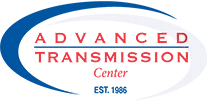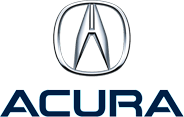
Transmission Basics
In a nutshell, the engine of your car creates something called rotational power, and to make the car move, it has to be transferred to the wheels. This is done through the drive train and the transmission is the central component of that. The transmission transfers the spin from the engine into power applied to the wheels. At different speeds, the power required to move the wheels will vary and the gear ratios within the transmission allows adjustment of power transfer from the engine to the wheels. This allows you to seamlessly speed up, slow down or stop.
The automatic transmission connects to the engine at the bell housing, where there is a torque converter or if it’s a manual transmission, a clutch. The transmission can be thought of as a switchboard, controlling the car’s power.
Parts of a Transmission
The outer case of a transmission is normally made of aluminum, protects the gears inside, and has sensors that track input speed from the engine and output speed to the rest of the car. The torque converter sits between the engine and the transmission and transfers power from the engine to the input shaft and increases the torque output.
The torque converter has four main parts. The pump, turbine, stator/reactor, and the torque converter clutch. These components work together to deliver power to the transmission and increases or decreases torque to move your car when you press the gas pedal or slow/stop when letting off the gas pedal or hitting the brake.
Planetary gears are inside the transmission and are controlled by the driver moving through gears on a manual transmission and automatically in an automatic transmission. These gears—made of a sun gear, planet gears/pinions, and a ring gear—can shift through numerous forward gears and one reverse gear. An automatic transmission usually has more than one set of planetary gears and they all work together with help of brake bands and clutches. Increasingly vehicles are designed with more gears to help with fuel efficiency standards and improved drivability, otherwise known as comfort. This evolution comes with higher levels of complexity within the transmission as it relates to electrical components including the valve body and solenoids. In addition, a transmission control module must accommodate more gears via its programming in concert with the various sensors identifying speed, pressure, and temperature.
The transmission as a whole is an engineering marvel that uses mechanical, fluid and electrical engineering to deliver the performance you expect every time you start your car.
Our Approach to Transmission Rebuilds
Once you understand how a transmission works and the complexities of the design, it is easier to understand why repairing one can be expensive and how important it is to take your vehicle to a shop that is honest and transparent, fully explaining the problem and what options you have to fix it.
It’s a fact–transmissions can and do wear out, sometimes through age, sometimes through neglect or abuse, and other times for no reason anyone can guess at. Some designs are better than others and our technicians are familiar with common failures with various models. At
Advanced Transmission Center, our approach is customer centric—we strive to repair only what is necessary in order to get the vehicle back in service while keeping costs down as much as possible. The integrity of your transmission and your satisfaction are our key concerns.
In order to achieve this goal, we take a very specific approach to transmission rebuilds, when a transmission has failed or is about to fail. The following four items should be prioritized in a quality rebuild: (1) identify the cause of failure and fix it, (2) replace soft parts, (3) replace marginal parts, (4) identify known failures unique to your transmission and determine if a fix is required.
Cause of Transmission Failure
Often a vehicle showing signs of a transmission issue will have one singular cause. A proper approach to diagnostics is required to identify this cause of failure. At Advanced Transmission Center, we employ our TrueTest Inspection It would be terrible to rebuild a transmission without taking into consideration the specific transmission codes, fluid condition or drivability symptoms discovered during the inspection. Causes of failure could include but is not limited to hard part damage, soft part deterioration, fluid quality or contamination, or electrical failure.
Soft Parts
Within a transmission, there are numerous parts that are made from materials that will face deterioration over time regardless of the maintenance you conduct on your vehicle. Some examples include clutches, gaskets, seals, o-rings, snap rings, etc. Every quality rebuild should include the replacement of these items. Parts manufacturers recognize the importance of this step and will sell all of these parts in one Master Rebuild Kit. Purchasing this kit saves customers significant money relative to buying each component within a kit. Some repair shops will quote customers below-average prices to rebuild a transmission and often it is because they do not replace the soft parts. They identify and repair the single cause of failure, otherwise known as a “spot repair”, without changing the soft or marginal parts. This lower-cost approach is irresponsible and exposes a customer to repeated transmission failures.
Marginal Parts
Although a single issue might cause the symptoms a driver is facing, normally the conditions leading to one cause of failure has already affected numerous other components. For example, if one seal is leaking it’s likely the condition of other seals is poor as well. Identifying and then repairing or replacing these marginal parts is a critical step to extending the life of your transmission and vehicle.
Other Known Failures
Like vehicle manufacturers, each transmission model has its own quirks. An experienced transmission shop should know common causes of failures for common transmission. A GM vehicle with a 4L60E has a high risk of clutches burning up in 3rd and 4th gear. A Ford vehicle with a 5R55E will likely face a servo bore failure. A Dodge vehicle with a 45RFE transmission often has issues due to the solenoid block. Even if these particularly known failures might not be the specific cause of failure in one particular situation, they should be taken into consideration when completing a quality transmission rebuild.
The amount of time to diagnose, remove, disassemble, rebuild and re-install a transmission is so extensive, it makes no sense to skimp on parts. Do it right the first time so you don’t have to deal with the hassle and price of having to do it again.
The Advanced Transmission Center approach to a transmission rebuild requires strict diagnostic procedures at each stage. We do not guess on which parts need to be repaired or replaced. Only when the transmission is disassembled by a qualified technician will we know the specific rebuild strategy. This is also the reason a high-quality transmission repair shop often cannot give customers a specific price over the phone on what a transmission rebuild will cost.
Make an Appointment Today
If you have concerns about the health of your transmission, or you’d simply like to be proactive in caring for it (something we heartily approve of!), please give us a call and schedule a day and time to come in. We look forward to helping you.
Advanced Transmission Center is a Colorado-owned and operated auto repair shop with locations in Denver / Lakewood and Westminster. ATC specializes in driveline issues such as automatic transmission repair, four wheel drive repair, clutch replacement, differentials, manual transmissions and CVT. As Colorado's first AAA approved shop our goal is to provide accurate, timely service with exceptional customer satisfaction. All of our technicians are certified in the latest makes and models and we are one of the few transmission repair shops with a nationwide warranty.



 Free Customer Towing Service
Free Customer Towing Service  Free TrueTest™ Inspection
Free TrueTest™ Inspection  Fast Transmission Services
Fast Transmission Services  Comprehensive Warranty in Denver
Comprehensive Warranty in Denver 

























